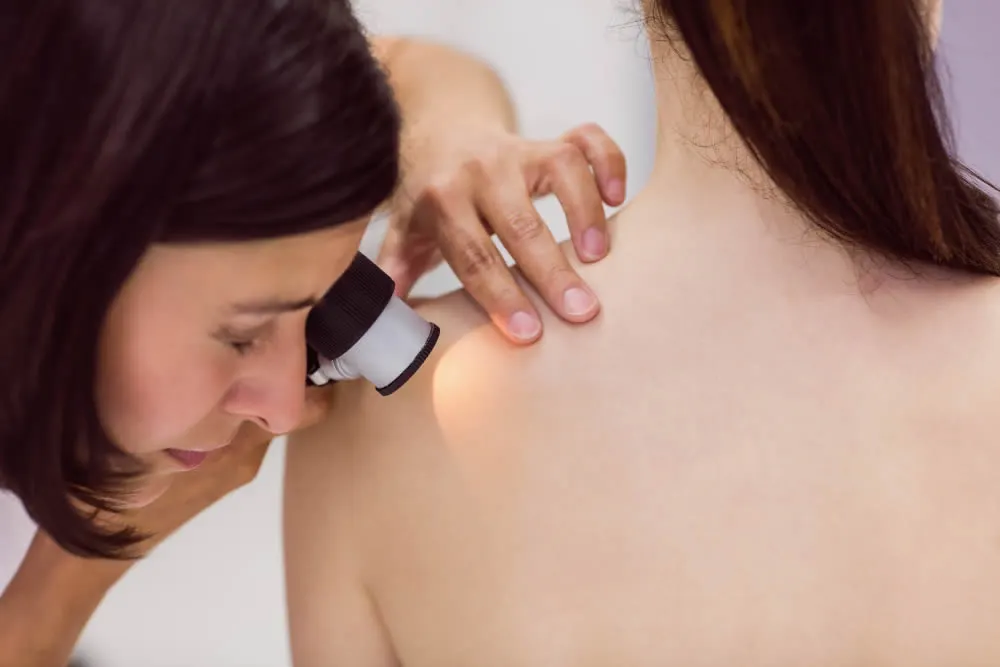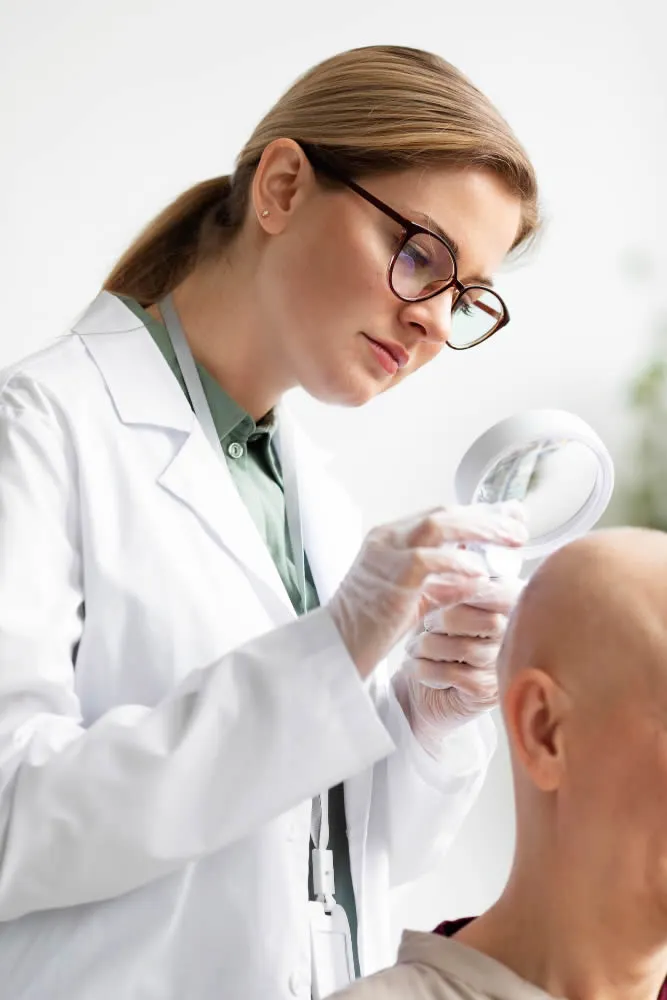What is Atypical Fibroxanthoma?
Atypical Fibroxanthoma (AFX) is a rare type of skin cancer that often appears as a firm, reddish-brown or pink bump on the skin, typically on sun-exposed areas such as the face, scalp, ears, and arms. Although it looks aggressive under the microscope, it’s relatively benign in behavior, meaning it doesn’t typically spread to other parts of the body.

Signs and symptoms of Atypical Fibroxanthoma
Atypical Fibroxanthoma (AFX) often presents as a raised, reddish-brown or pink bump on the skin’s surface. Keep an eye out for changes in color, size, or texture of existing skin lesions, as these could signal AFX.
Additionally, be alert to any bleeding, itching, or pain associated with growths, as these symptoms might indicate a need for medical evaluation. While AFX is generally not life-threatening, recognizing these signs early and seeking dermatologist advice can lead to effective management and peace of mind.
Who usually gets Atypical Fibroxanthoma?
Atypical Fibroxanthoma (AFX) predominantly appears in fair or light skin individuals. This particular skin condition tends to emerge more frequently as people age, especially when they reach their 70s and 80s. The incidence of AFX is noticeably higher in men compared to women, making gender another noteworthy factor in its occurrence.
However, while age and gender play roles in the development of AFX, genetics doesn’t seem to. Unlike many conditions where family history can indicate susceptibility, AFX doesn’t follow that pattern. It’s not a condition passed down from generation to generation, meaning it’s not hereditary. This distinction is crucial for families where a member is diagnosed, as it helps understand the risks for the younger generation.
How do dermatologists treat Atypical Fibroxanthoma?
Dermatologists primarily treat Atypical Fibroxanthoma (AFX) through surgical procedures. The most common method is an excision, where the dermatologist removes the tumor along with a small margin of the surrounding healthy skin to eliminate all cancerous cells.
Another surgical procedure that can be employed is Mohs micrographic surgery. In this method, the surgeon removes the tumor layer by layer, examining each layer under the microscope until no abnormal cells remain. This approach is especially useful for tumors in cosmetically sensitive areas because it helps preserve as much healthy skin as possible.
After the removal, the wound might be closed with stitches, or sometimes a skin graft might be needed if a large skin area is removed. Post-surgical care is essential to ensure proper healing and to monitor for any signs of recurrence. In most cases, if the AFX is fully removed, the prognosis is very good, and the chance of it returning is low.
What to expect after treatment of Atypical Fibroxanthoma?
Patients can expect a recovery period after treatment for Atypical Fibroxanthoma (AFX), especially if surgery is performed.
Here’s what typically follows:
- Wound Healing: The surgical site will need time to heal. Depending on the size and location of the removed tumor, this might involve simple wound care, like cleaning and dressing the area, or more specialized care if a skin graft is used.
- Scarring: As with any surgery, there’s the possibility of scarring. However, the appearance of scars can often be minimized with proper wound care and the use of certain creams or ointments recommended by the dermatologists.
- Follow-up Visits: Regular check-ups with the dermatologist. These visits allow the dermatologist to ensure the wound is healing properly and to monitor for any signs of AFX recurrence or other skin conditions.
- Potential for Recurrence: While AFX doesn’t frequently return after successful treatment, it’s important to remain vigilant. Patients should regularly self-examine their skin and report any new or changing growths to their dermatologist.
- Sun Protection: Since sun exposure is a risk factor for AFX, dermatologists often advise patients to adopt rigorous sun protection habits. This includes using sunscreen, wearing protective clothing, and avoiding excessive sun exposure, especially during peak UV hours.

FAQ About Atypical Fibroxanthoma
Is AFX Painful?
AFX growths are typically not painful. However, if they become irritated due to friction, injury, or other factors, they might cause discomfort or pain.
Are There Non-Surgical Treatment Options for AFX?
While surgical removal is the most common approach, some cases might be treated with radiation therapy or other methods. Your dermatologist will determine the best option for your specific situation.
Can AFX Spread to Other Parts of the Body?
AFX is considered to be locally aggressive, meaning it can grow into nearby tissues, but it typically does not metastasize or spread to distant organs like some other cancers.
Are There Long-Term Effects After AFX Removal?
The primary concern after successful AFX removal is wound healing and minimizing scarring. In most cases, patients can expect a full recovery with proper care.
Is there a dermatologist near me in Detroit that offers treatment for Atypical Fibroxanthoma?
Yes. At our Detroit dermatology office we offer treatment for Atypical Fibroxanthoma to patients from Detroit and the surrounding area. Contact our office today to schedule an appointment.

